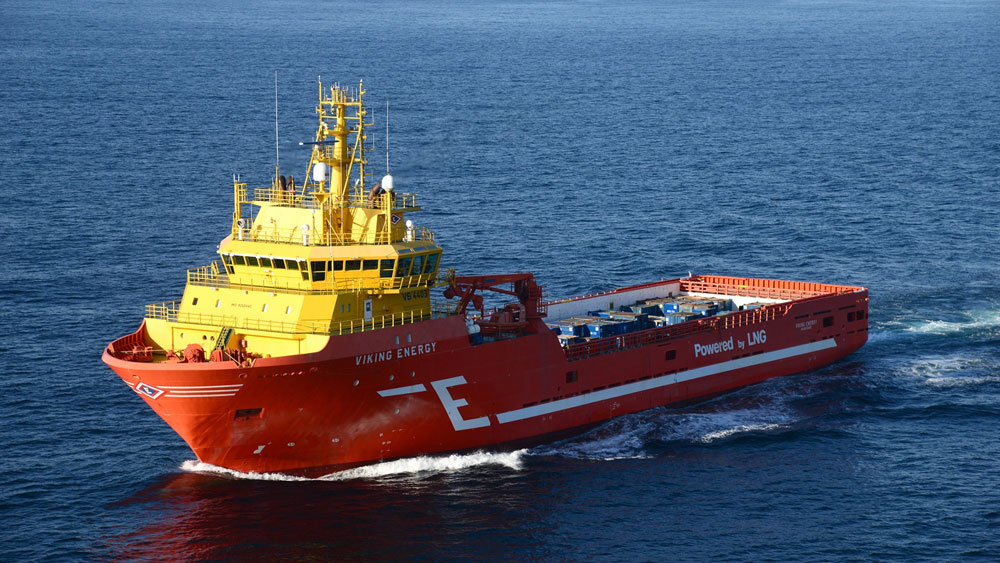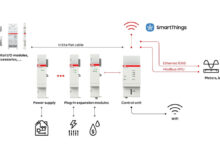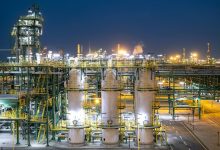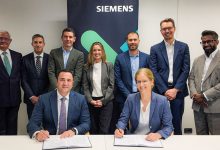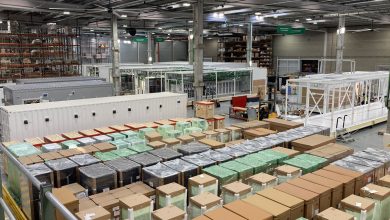World’s First Carbon-free Ammonia-fuelled Supply Vessel on the Drawing Board
Equinor has signed an agreement with Eidesvik Offshore for the modification of the Viking Energy supply vessel, to make it capable of covering long distances fuelled by carbon-free ammonia. The vessel will transport supplies to installations on the Norwegian continental shelf (NCS).
Equinor has awarded Eidesvik Offshore a five-year contract with effect from April 2020, when the current contract expires. The Viking Energy supply vessel will in the contract period be part of a research project developing, installing and testing long-distance sailing fuelled by carbon-free ammonia fuel cells. The technology will be tested on the vessel from 2024.
“Equinor aims to reduce the emissions in our supply chain, and regards the use of ammonia as a promising solution. Viking Energy may become the first supply vessel in the world covering long distances fuelled by pure carbon-free ammonia,” says Cecilie Rønning, senior vice president for Equinor’s joint operations support.
Together with the Konkraft partners Equinor earlier this year launched a joint ambition to reduce the greenhouse gas emissions from oil and gas operations in Norway by 40 percent by 2030, and to near zero by 2050.
Testing ammonia
The project will test whether the technology can deliver 100 percent carbon-free power over long distances.
According to the project plans ammonia will meet 60 to 70 percent of the power requirement on board for a test period of one year. Viking Energy will still be able to use LNG as fuel, and the remaining power requirement will be met by battery.
Equinor is part of the European innovation project ShipFC, a consortium of 14 European companies and institutions coordinated by NCE Maritime Cleantech.
Technology development partnership
The main partners of the five-year research project are NCE Maritime Cleantech, Eidesvik Offshore, Wärtsilä, Prototech and Equinor. Wärtsilä will deliver the power technology and ammonia storage and distribution systems. Prototech will deliver the fuel cell system.
“If we solve this the ship industry will for the first time use a fuel that does not generate emissions during combustion. Much work remains, but Equinor will contribute both to technology development and as a customer. We have never before used a carbon-free fuel on a large vessel without range anxiety,” says Henriette Undrum, Equinor’s head of future value chains.
Ammonia research on Viking Energy has a total budget of NOK 230 million, a substantial part of which is EU funded. The partners also have a good dialogue with Innovasjon Norge and Enova about potential additional funding of the project.
Continued greenhouse gas reduction
Equinor has since the early 2000s proactively addressed ways of cutting emissions from supply vessels on the NCS. Viking Energy was the first LNG-fuelled vessel in Equinor’s fleet in 2003, and the first vessel with hybrid battery power in 2016.
Hybrid battery power and power from shore are now part of the requirements for all supply vessels that sign long-term contracts with Equinor.
During 2020 all the 19 supply vessels on long-term contracts with Equinor will feature battery power and power from shore. Ammonia-fuelled vessels will be a new step in the right direction in the efforts to reduce the carbon footprint from maritime operations.
Facts – Maritime fuels
- In 2018 the UN maritime organization IMO adopted a strategy to halve emissions from international maritime operations by 2050, phasing them out as soon as possible.
- The Konkraft partners Norwegian Oil and Gas, Norsk Industri, the Norwegian Shipowners’ Association, LO, including the Norwegian United Federation of Trade Unions and Industri Energi, have together with their members established new climate goals. Norwegian oil and gas industry aims to reduce its greenhouse gas emissions by 40 percent by 2030 compared with 2005, and to near zero by 2050.
- Employing a new carbon-free fuel will be essential to achieving the UN goal. Ammonia has the highest energy density of all fuels.
- Equinor and Eidesvik have together been global leaders both on LNG, and on developing and using battery packages on vessels.
- Ammonia (NH3) is produced by combining hydrogen and nitrogen in air. Hydrogen can be produced both from natural gas and from renewable sources through electrolysis.
- Hydrogen in this project is produced by Yara through electrolysis.
Equinor to cut Emissions in Norway Towards Near Zero in 2050
On January 6 Equinor has launched new climate ambitions to reduce the absolute greenhouse gas emissions from its operated offshore fields and onshore plants in Norway by 40% by 2030, 70% by 2040 and to near zero by 2050. By 2030 this implies annual cuts of more than 5 million tonnes, corresponding to around 10% of Norway’s total CO2 emissions.
“Equinor supports the Paris agreement and a net zero target for society. We have already brought CO2-emissions in the production process down to industry leading levels. We are now launching an unprecedented set of ambitions for forceful industrial action and substantial absolute emission reductions in Norway, aiming towards near zero in 2050. This is in line with society’s climate targets and our strategy to create high value with low emissions,” said Eldar Sætre, CEO of Equinor.
“While realising these ambitions, we also expect our operated fields and plants to create significant value with a potential to generate more than 3,000 billion Norwegian kroner in income for the Norwegian State towards 2030. New fields, field life extensions, improved oil and gas recovery and efficient operations will all contribute to substantial value creation. The new climate ambitions will strengthen future competitiveness and value creation for Equinor, while supporting industrial developments in Norway,” mentioned Sætre.
“Collaboration is key to combat climate change. We appreciate the close cooperation with our industry partners and suppliers, and to realise these ambitions we need even closer collaboration across industries and with authorities. We plan investments in the order of 50 billion Norwegian kroner together with our partners by 2030 to cut emissions in order to strengthen the long-term competitiveness for our fields and plants. In setting these ambitions Equinor has assumed stable framework conditions and necessary investments in the electricity grid,” added Sætre.
The first phase of the plan to reduce emissions by 2030 means more than 5 million tonnes in annual reductions, representing around 10% of total annual Norwegian greenhouse gas emissions today. As for the EU ETS targets, 2005 is used as a baseline for emissions reductions.
Total emissions for Equinor operated fields and plants in 2018 were around 13 million tonnes, approximately the same level as in 2005. The ambition will cover all greenhouse gas emissions from offshore fields and onshore plants operated by Equinor in Norway, including both Scope 1 and Scope 2 emissions of CO2 and methane. Since methane emissions are very low at the Norwegian continental shelf, the CO2-emissions is the predominant part.
A 40% reduction by 2030 will be realised through large scale industrial measures, including energy efficiency, digitalisation and the launch of several electrification projects at key fields and plants, including the Troll and Oseberg offshore fields and the Hammerfest LNG plant.
The 2030 ambition will require investments of around NOK 50 billion for Equinor and its partners. Subject to positive investment decisions in the licences, these investments will have neutral to positive net present value, in addition to strengthening future competitiveness.
Further reduction ambitions towards 70% in 2040 and close to zero in 2050 will entail additional measures, further electrification projects, consolidation of infrastructure as well as opportunities to develop new technologies and value chains.
In 2050, Equinor expects Norwegian oil and gas production to be less than half of current levels, assuming development of the defined projects ahead of us, substantial efforts to increase production from existing fields and continued exploration.
Equinor aims to utilize its capabilities within innovation, technology and large-scale industrial solutions to develop new competitive value chains. Currently Equinor is pursuing and maturing opportunities within offshore wind, carbon capture and storage and emissions-free hydrogen based on natural gas.
The ambitions will support the development of new value chains within hydrogen and carbon capture and storage and help ensure that the Norwegian continental shelf and onshore plants can play an important role and create value in a world with net zero emissions.
In setting ambitions for substantial cuts towards close to zero emissions in 2050, Equinor has assumed stable Norwegian framework conditions, including the tax system, and necessary investments in the onshore electricity grid. A continuation of the industry’s NOX-fund and other positive measures can support substantial emissions reduction.
Setting ambitions for substantial cuts in emissions in Norway is an important step in aligning Equinor’s business with the Paris Agreement. Equinor will present new corporate climate ambitions and a holistic climate platform, including an approach to decarbonisation and life cycle emissions, at the Capital Markets Update in February.


